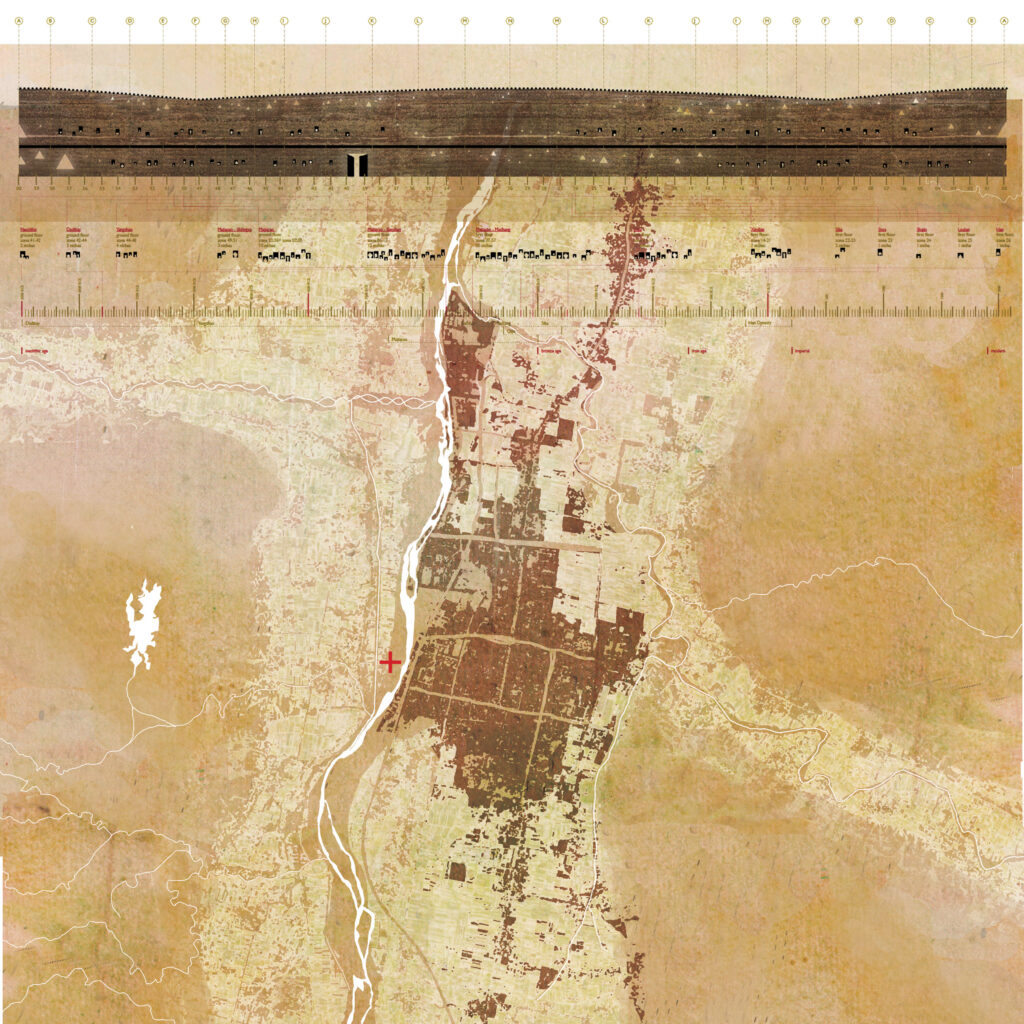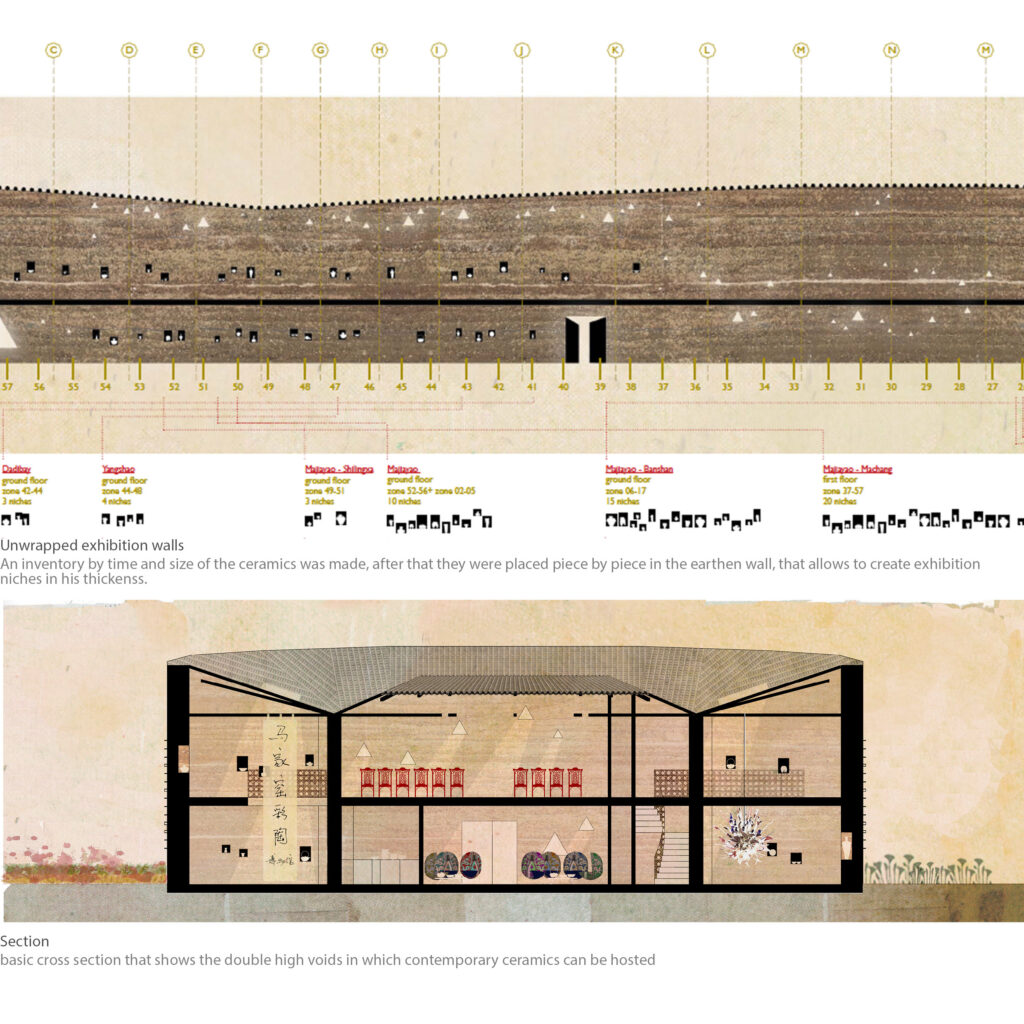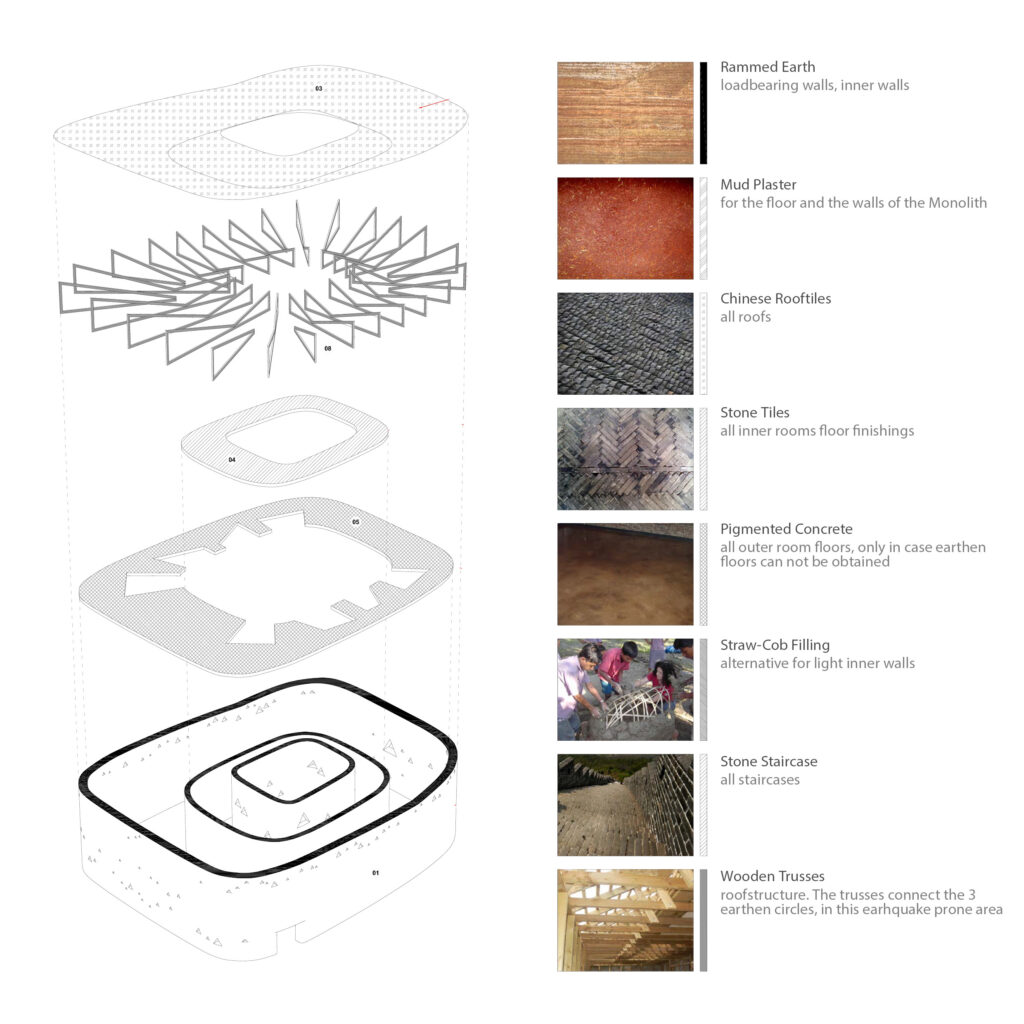Majiayao seismic ceramics museum



short note
2014, Hanzou, China
Majiayao Ceramics Museum- Masterplan proposal
Located in China, in the province of Gansu, the city of Lintao is surrounded by a contrasting landscape formed by the Liu Jia mountains and the Tao river plains. From 3100 to 2700 before Christ the area around Lintao was inhabited by the Majiayao Culture, representing agricultural communities in the Yellow River region. This culture is mainly known for their painted pottery, which are widely excavated and currently exhibited in the immediate surroundings.
A Rammed Earth Masterplan and first phase Ceramics museum were conceived to host the collection of more than 3000 year old Chinese pottery that was found in Lintao.
Reduced to the essence, the museums shape is based on the interplay between ancient an contemporary ceramics. The ancient ceramics find their place in the niches of the outer earthen wall, facing the second earthen wall in the middle that hosts the contemporary ceramics as well as the infrastructures that serve the museum. A third earh wall forms the inner courtyard, a place where old and new are reconciled.
By choosing earth as a construction material, the relationship between the fired ceramics and the unfired clay walls that host them comes naturally. This is also a reference to the centuries that the pottery was protected within the earthen bed. Furthermore, knowing that over the past 3 years China has used as much concrete as the United States of America over the past 25years, the choise to build with earth is a milestone for sustainable building in China.
details
2014 – Masterplan Design including the rammed earth pavillion for Studio Anna Heringer